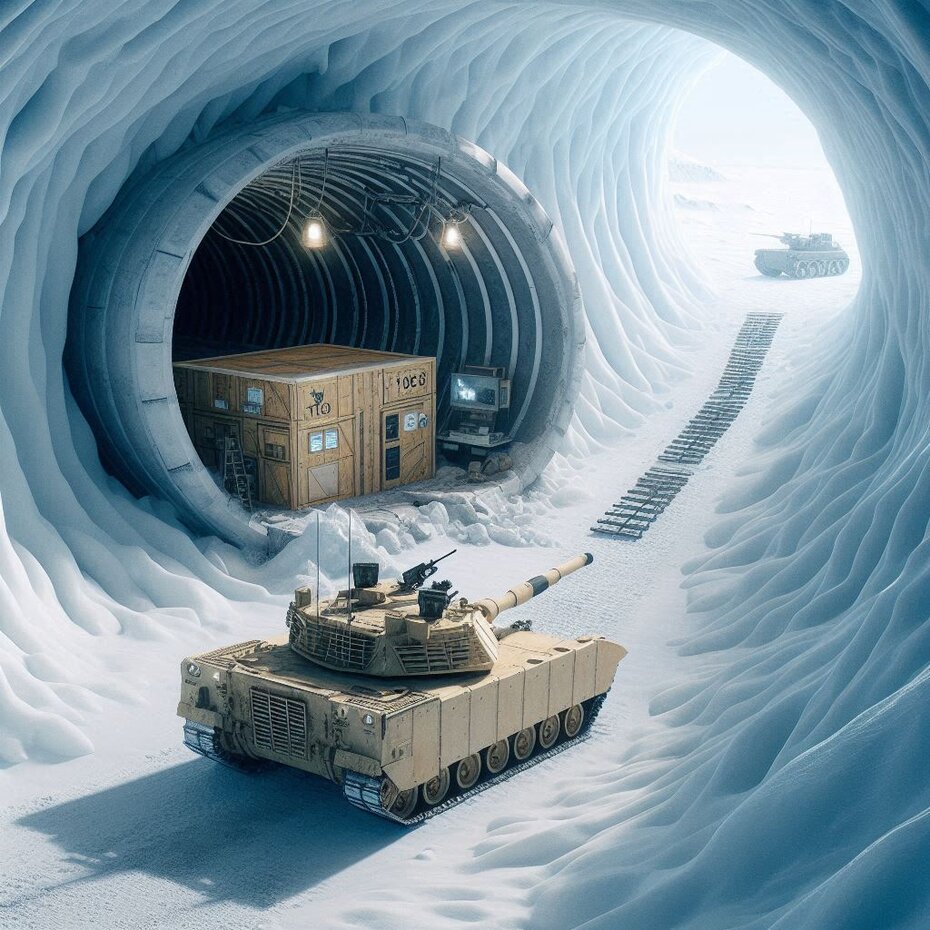Dirty? Clean it up!
Under the frozen surface of Greenland, 100 km off the west coast of the continent, there is an American military base abandoned during the Cold War that will cause incalculable damage when it is hit by the increasing melting of the polar ice cap.

The construction of a military base halfway between the USA and Moscow, consisting of 4,000 km of tunnels 30m deep in the ice, capable of housing the entire population of the base and around 600 nuclear missiles, was part of a 1950s /1960s US Army project called the Iceworm Project. Of the total planned, only 3km of tunnels of varying dimensions were excavated, but the risk of their imminent collapse led the US Army to abandon the project.
At the time, the military boasted that the base was being built using very cheap technology. The tunnels were dug with Swiss machines to remove snow from the roads and then covered with flexible tiles and a new layer of snow. After a week, the snow on the roof would freeze again, forming a self-supporting structure. Insulated and heated prefabricated houses were installed inside the tunnels and the site was named Camp Century.
The energy needed to run the military base came from a portable atomic reactor, which operated on site for three years before being permanently removed. However, the waste generated by its operation was abandoned at the site, where it remains to this day.
Although the Iceworm Project was considered top secret, it was disclosed in the American media through an article written by James J. Haggerty Jr, an American naval officer. This article was published in May 1956 in Collier's Magazine under the catchy name “Subways under the icecap”. The article describes in detail the tunnels, their dimensions, their depth below the surface, which parts of the structure can be seen from the surface and how far Camp Century is from Thule Air Base on the coast of Greenland.
In addition, a Danish civilian aged just 18, Soeren Gregersen, spent months on end following the construction of this base, roaming around the vicinity of the nuclear reactor, writing detailed notes in his diary and taking photos at his leisure. His notes are well organized in three files, written during the time he stayed at the military base. Let's face it, the fact that a top-secret project is so poorly guarded is pretty strange, isn't it?
The entire process of building the base was filmed in color in order to be shown to the public as part of a government campaign to win over public opinion. The purpose of this operation can be better understood if we remember that, at the time, the US was struggling with its failure in the space race. While still unable to launch a rocket into space, the Americans watched the Russian space capsule Sputnik cross their country's skies. Any gimmick that would lead the American public to believe that the US had the situation under control was worthwhile. Even the construction of a military base dug into the ice!
In 1966, the American military finally seemed to realize that the deformation of the walls and roof of these ice tunnels put the safety of people and equipment at risk. Although the engineers of the First Engineer Arctic Task Force claimed that the ice was “hard as concrete”, the force exerted by the weight of frequent snowfalls causes the ice cap to deform downwards and towards the coast, making the ice unsuitable for large-scale construction.
A recent radar survey carried out in Greenland shows that the tunnels drilled into the ice by the US Army at the time have already moved 232m towards the Greenland coast as a result of the constant deformation of the ice cap. But what's the problem with that? In fact, this is a very serious environmental safety issue.
The fact is that when the American army abandoned Camp Century, it abandoned around 9,200 tons of garbage, 200,000 liters of diesel oil and the nuclear waste resulting from the operation of the reactor for three years. This waste is still sinking in the same place where it was dumped in the ice, due to its high temperature. The question that now remains unanswered is who is going to empty this dump before the melting of the polar ice caps and climatic events bring all this waste into contact with seawater, causing an unprecedented ecological disaster?
Translated with DeepL.com (free version)
Voltar
